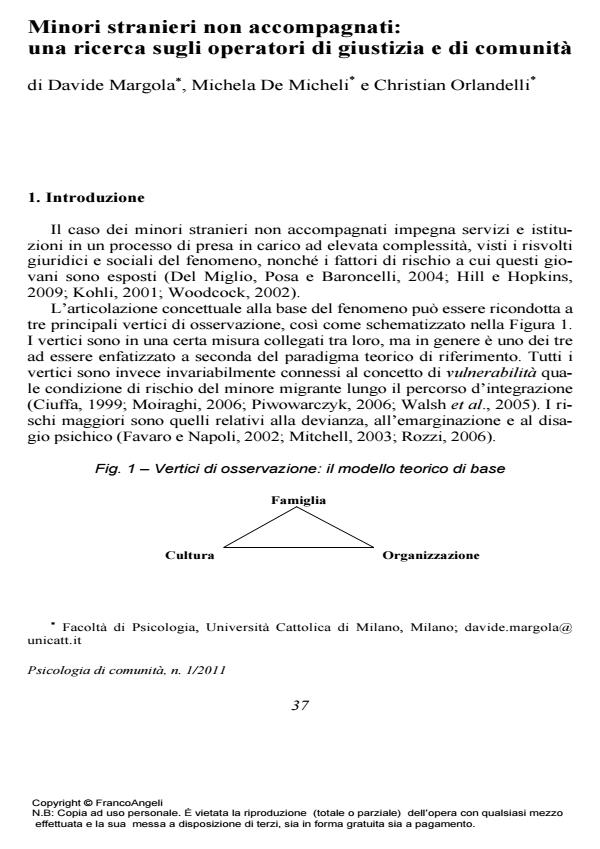Unaccompanied immigrant minors: A study on legal and community workers
Journal title PSICOLOGIA DI COMUNITA’
Author/s Davide Margola, Michela De Micheli, Christian Orlandelli
Publishing Year 2011 Issue 2011/1
Language Italian Pages 19 P. 37-55 File size 784 KB
DOI 10.3280/PSC2011-001005
DOI is like a bar code for intellectual property: to have more infomation
click here
Below, you can see the article first page
If you want to buy this article in PDF format, you can do it, following the instructions to buy download credits

FrancoAngeli is member of Publishers International Linking Association, Inc (PILA), a not-for-profit association which run the CrossRef service enabling links to and from online scholarly content.
Unaccompanied immigrant minors receive services from various professionals, each with different roles such as those of protection and control. Eighteen professionals (i.e., legal, first-aid and community housing educators) were interviewed as "key witnesses" in various stages of the reception system for these young immigrants. In particular, the study focused on the professionals’ descriptions and views as well as their aims and practices in working in the field with unaccompanied immigrant minors. Interviews were analyzed using a mixed-methods software for textual analysis (T-LAB). Five core themes emerged that focused on family relationships, protection, deviance, as well as educational and cultural issues. Significant differences were found in terms of specific variables, such that respondents differed according to their professional background and gender. In conclusion, the results of the study are discussed within the broader view of integration processes as well as services for these minors.
Keywords: Unaccompanied immigrant minors; organizational culture; network intervention; protection; deviance; family relationships
- ‘Inevitable distinctions’ Marzia Saglietti, in Language and Dialogue /2019 pp.172
DOI: 10.1075/ld.00037.sag
Davide Margola, Michela De Micheli, Christian Orlandelli, Minori stranieri non accompagnati: una ricerca sugli operatori di giustizia e di comunità in "PSICOLOGIA DI COMUNITA’" 1/2011, pp 37-55, DOI: 10.3280/PSC2011-001005